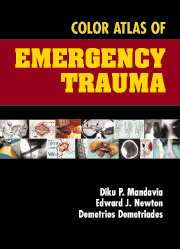Forewords
Published online by Cambridge University Press: 10 November 2010
Summary
Though many texts are written in medicine, few have the impact of an atlas that can capture the presence of being at the bedside. The authors share the visual aspects of trauma care and allow the reader to more readily understand textual descriptions. They have produced a comprehensive atlas of trauma that is an excellent reference for physicians involved in trauma care.
The experienced trauma clinicians writing this text present their collective experience in a visual manner that represents many years of dedicated image collection and collaborative efforts from the Department of Emergency Medicine and the Division of Trauma at Los Angeles County-University of Southern California Medical Center. This Center is one of the busiest and most active trauma centers in the world.
Gail V. Anderson Sr., MD
Professor and Chairman
Department of Emergency Medicine
University of Southern California
There is no end to the writing of books, and their shelf life is limited by the march of understanding. Surgical atlases are less common and their effect lasts longer. Perhaps this is due to their dependency on the experience of the authors. Time is required between simply performing a procedure and becoming intimately familiar with the procedure. It is the latter that provides technical insights and make the atlas of value.
Most atlases consist of an artist's conception of the procedures involved. They are a step removed from the real world and there are concerns of authenticity. A danger exists that the illustrations will encourage action without a thorough understanding of the pathophysiological principles involved. The latter differentiates knowledge about from knowledge of the procedure being described and the problems it is designed to correct.
- Type
- Chapter
- Information
- Color Atlas of Emergency Trauma , pp. xiii - xivPublisher: Cambridge University PressPrint publication year: 2003



